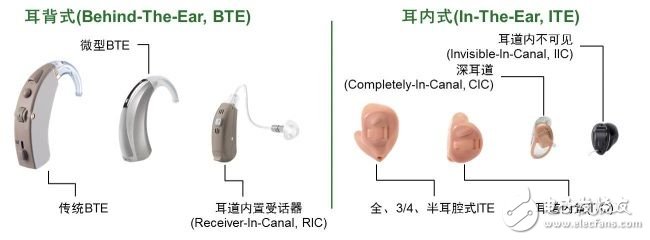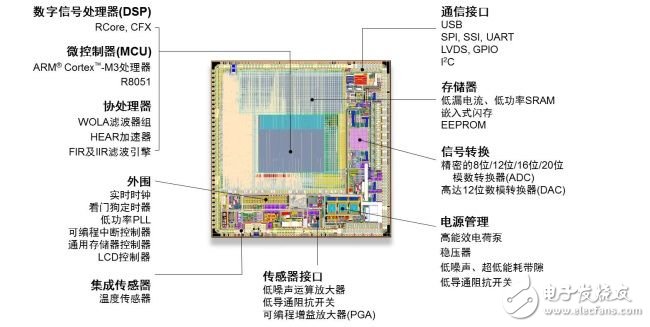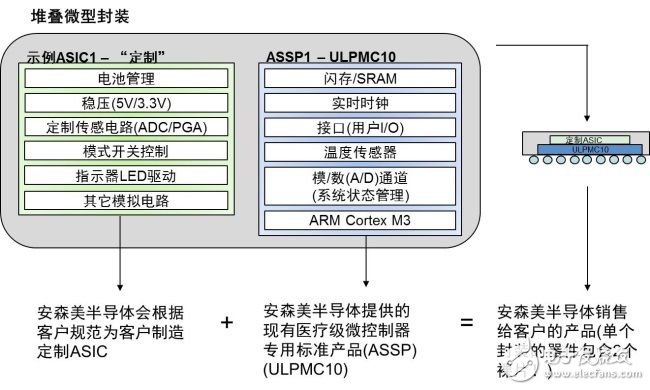China's population aging process is continuing to accelerate: According to the United Nations 2010 population outlook, the percentage of China's population over 60 years old in 2010 was 12.3%, and it is expected to increase to 24.4% by 2030 and even 33.9% by 2050. . At the same time, as people's living standards improve, life expectancy is getting longer and longer, and more attention will be paid to medical care and health care. Outpatient/home health care will become more and more common. Moreover, the aging of the population may lead to higher rates of heart disease, diabetes, asthma, and the Chinese government plans to achieve universal health insurance, etc., China's medical equipment industry will continue to develop.
At present, China's medical equipment market is scattered, and only a few large medical equipment companies such as Mindray, Jin Kewei, Omron and so on, the market potential is huge, many small companies are also targeting this market, vying to develop innovative medical solutions. Therefore, the development trend of medical equipment includes the addition of "smart" and data storage characteristics, portability, wireless/connected solutions, human body area networks, and the like. Medical semiconductors undoubtedly play a leading role in the innovation of medical devices/solutions, towards higher integration, miniaturization, and energy efficiency, while shifting consumer medical devices to standard components and embedding wireless capabilities.
ON Semiconductor brings silicon to life
ON Semiconductor's high-performance silicon solutions help medical technology developers solve their unique design challenges. An active member of the Health Alliance, ON Semiconductor's highly skilled system architects, design, packaging and test engineers have a rich intellectual property (IP) lineup, a world-class factory, and more than 30 years of custom silicon experience. Comprehensive product lineup and services, including: custom mixed-signal application-specific integrated circuits (ASICs), application-specific standard products (ASSPs), medical-grade discrete components, hearing aid digital signal processing (DSP) systems, custom and semi-custom ultra-low power Memory consumption, advanced packaging for system miniaturization, additional foundry services, etc., development kits, software packages, product libraries, etc. to ensure a fully qualified and strong development process, product life support for extended product life cycle, data traceable And preservation, the quality is certified by ISO 13485 medical system, and the fault analysis laboratory is set up, which can be batch acceptance test.
ON Semiconductor's key healthcare segments include implants, hearing health and clinical and designated devices.
Implant
Implant applications primarily include defibrillators and cardiac pacemakers, neurostimulators, injectable monitors, and respirable electrons. ON Semiconductor provides ASICs, memory, discrete components, modules and foundry services for such applications.
Using an implantable neurostimulation platform, ON Semiconductor offers a single-chip solution with integrated controller, memory, digital, analog, and high-voltage, using a multi-channel surge suppressor (TSS) to further significantly reduce the number of discrete components (usually IC Reduce the number of dies from 3-4 to 1-2), help reduce board space, simplify equipment manufacturing and logistics, reduce cost and power consumption, reduce system/board reliance, and improve quality Speed ​​up time to market and reduce development risks.

Figure 1: ON Semiconductor's single-chip solution for implantable nerve stimulation platforms
ON Semiconductor offers standard discrete components such as diodes, MOSFETs, IGBTs, and power regulators for medical applications and offers customizable options to meet the needs of the medical market (Table 1).

Table 1: ON Semiconductor offers customizable options
ON Semiconductor offers custom ASSPs based on the unique needs of medical applications, such as multi-channel transient surge suppressors that can be tailored to unique physical and electrical parameters, with extremely fast conduction, maximum inrush current greater than 12 A, etc. Key features; SRAM, EEPROM, and SRAM-Flash with low pin count, ultra-low leakage current, 8 Mb storage capacity, and ultra-low power consumption.
To achieve lower cost and higher energy efficiency, ON Semiconductor also offers serial SRAM memory instead of EEPROM, FRAM and standard SRAM. Parallel SRAM typically requires three control inputs, 15 address inputs, and eight data I/Os for a total of 26 lines, for low-power applications only. The serial SRAM only needs a total of 4 lines, and the footprint is smaller, the pins are smaller, the power consumption is lower, the average backup data can be saved for 10 years, and the system cost is lower, which is very suitable for cardiac monitoring equipment, etc. Small size application.
In particular, to meet specific requirements of the FDA III, ON Semiconductor offers medical-grade standard components for implant or life-critical applications, and provides MIL-STD-750 compliance with MIL-PRF-1950 certification. A high-reliability process that supports JAN/JANHC quality levels and military-standard protocol models such as production line manufacturing approved by the Defense Logistics Agency (DLA).
Hearing aid
Hearing aids are mainly classified into Behind-The-Ear (BTE) and In-The-Ear (ITE) depending on the wearing position. The former includes traditional BTE, micro BTE and Receiver-In-Canal (RIC), the latter including full, 3/4, half-ear cavity ITE, ear canal (ITC), deep ear canal (Completely- In-Canal, CIC) and Invisible-In-Canal (IIC).

Figure 2: Overview of the main types of hearing aids
Micro and "invisible" are a major trend for hearing aids: smaller RICs and new IIC types are more popular, requiring semiconductor manufacturers to move to 65 nm or smaller nodes and miniaturized packaging technology; hearing aids The second trend is to add wireless communication and connectivity: current 2.4 GHz, 900 MHz and Near Field Magnetic Induction (NFMI) technology with Bluetooth relay devices require interoperability and advanced packaging technology; third, hearing aids will evolve To be more "smart" and fully automated: such as volume control and signal processing automatically adapt to the sound environment, making the user more comfortable, which requires increased processing power and algorithm complexity. The development of hearing aids creates design challenges in terms of power consumption, size, and mixed-signal processing, such as requiring less than 1 mA of current consumption at 1 V operating voltage, multi-chip and chip area less than 10 mm2, digital and analog functions, and more.

Figure 3: shows the composition of a typical hearing aid and the components available from ON Semiconductor
ON Semiconductor offers a complete line of DSP systems including pre-fitted RHYTHM series, pre-configured RHYTHM and AYRE series, and Ezairo series. In addition to DSP, ADC, DAC, NVM and other comprehensive hearing aid systems, these series also provide different configurations for different target designers to meet their different needs: Ezairo series of programmable IDE, suitable for technical experts with differentiated algorithms The pre-configured series provides preloaded algorithms, supporting infrastructure tools (SoundDesigner, ARK) and reference designs for older customers and those with intermediate audiology knowledge; the pre-adaptive series offers preloaded algorithms, companion manuals, and upcoming The reference design helps solve the design challenges for new hearing aid manufacturers and analog hearing aid manufacturers.
In solving the space-constrained requirements for hearing aid manufacturers, ON Semiconductor has more than 40 years of experience, mainly using advanced 2.5D and 3D ultra-small system-in-package (SiP), which means different silicon chips and discretes in the same package. The components are connected together to save space and improve electrical performance by reducing signal distance. SiP is a custom package development and manufacturing service designed for medical applications that focus on size, performance and system integration.
ON Semiconductor will introduce a new SiP-based integrated 2.4 GHz wireless module with dimensions of only 7.39 & TImes; 3.94 & TImes; 1.4 mm, with key features including: integrated fully programmable multi-core audio processor, adapter via linear interface Connect to any audio source (TV, HiFi) to provide stereo streaming of the remote microphone adapter, use the phone's standard profiles such as “Find Meâ€, “telephone alert profileâ€, etc. for control, volume and program control via mobile phone control, etc. Wait.
Custom medical ASIC
Medical device designers generally face the following design challenges:
* Low energy consumption: Battery-powered medical devices require high battery life, while standard discrete components can consume too much current to provide satisfactory product life; *Small size: usually required to be small to provide dispersion and comfort Degree, while using standard discrete components will make the form factor too large; * High voltage: the sensor may require high voltage bias and generate a very low level signal. When using discrete components to handle high voltage and low voltage, the sensor interface circuit is usually too Complex; *Low noise: The signal captured by the dedicated human sensor is very weak, leakage current or other unwanted current will overwhelm the signal generated by the sensor; *Long product life cycle: possibly more than 10 years, and many standard components in medical equipment It has been eliminated before the end of production; * Low BOM cost: The number of system components designed with discrete components is large, and the cost cannot be reduced.
A custom ASIC solution delivers power efficiency, high size integration, high voltage and low voltage circuitry, high signal path isolation and low noise, long product lifecycles, and integrated solutions to reduce system cost. Help designers solve their unique design challenges.
ON Semiconductor has a broad portfolio of high-performance, low-power ASIC IPs and offers system-level solutions such as low-power sound triggering for hands-free operation. In China, ON Semiconductor has accumulated successful medical ASIC cases. As of 2007, ON Semiconductor has developed a custom patient monitoring ASIC for Mindray for multi-channel ECG, heart rate and respiratory monitors, blood oxygen saturation and other patient monitoring devices to achieve lower performance than discrete standard product solutions. Consume and reduce overall BOM costs. Mindray will also release more products using this ASIC.

Figure 4: ON Semiconductor's high-performance, low-power ASIC IP lineup
Struix is ​​a semi-custom combination solution from ON Semiconductor that consists of custom and standard ASSP components, an analog sensor interface or a driver tailored to the customer's proprietary specifications, and an ARM Cortex-M3 core (ULPMC10) An ultra-low power, only digital microcontroller chip. "Struix" is a "stacked" t-stacked Latin form that stacks custom chips and standard chips in a single package to provide a miniature, energy-efficient semiconductor solution that offers more customization than standard components. Reduces design time and reduces development risk and associated costs over a complete system-on-chip (SoC) solution for micromedical devices such as blood glucose monitoring, transdermal delivery, portable and point-of-care (PoC) patient monitoring. Figure 5 is an example of a Struix-based product that leverages silicon integration and modularity, is highly integrated, and easy to design, further enhancing design flexibility because the ULPMC10 microcontroller can be used with ON Semiconductor's future micro-control The device is easily upgraded without the need to replace the analog front end.

Figure 5: Example of an ON Semiconductor Struix product
Conclusion
Driven by a combination of market dynamics, demographic trends, government policies, medical industry structure and growth, China's medical device industry has considerable development prospects. Medical device manufacturers need to adopt innovative, energy-efficient semiconductor solutions for innovation at the forefront of the market. With the emerging trend of wearable medicine, medical semiconductors are moving toward higher integration, miniaturization, and higher energy efficiency. As a supplier of energy-efficient innovations, ON Semiconductor provides complete medical semiconductor products and services, extensive expertise and experience in response to market trends, and promises products and solutions with high quality and reliability to meet the stringent requirements of the medical market. Medical technology developers address their unique design challenges.
LED Flood Light ( Driver On Board) is different from LED Flood Light(Build In Driver). The unique features of led flood light are: CRI>80,80-100LM/W,170-260V,PF>0.9. We are the manufacturer of producing energy saving and waterproof project lamps. There are three color temperatures with cool white, warm white and natural white of flood flights. Our LED Flood Light is the best choice for park, parking lot, garden, building, billboard, park, outdoor basketball court, airport lighting and sports hall etc.
Led Flood Light (Driver On Board)
Home Depot Flood Lights,Outdoor Flood Light Bulbs,Led Pir Floodlight,Flood Lights Lowes
Jiangmen Lika Lighting Electrical Appliances Co., Ltd , https://www.lika-led.com